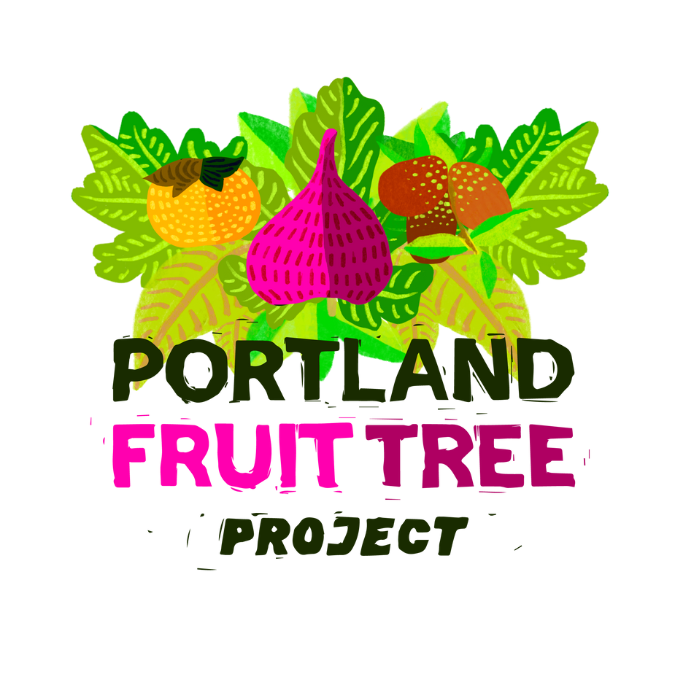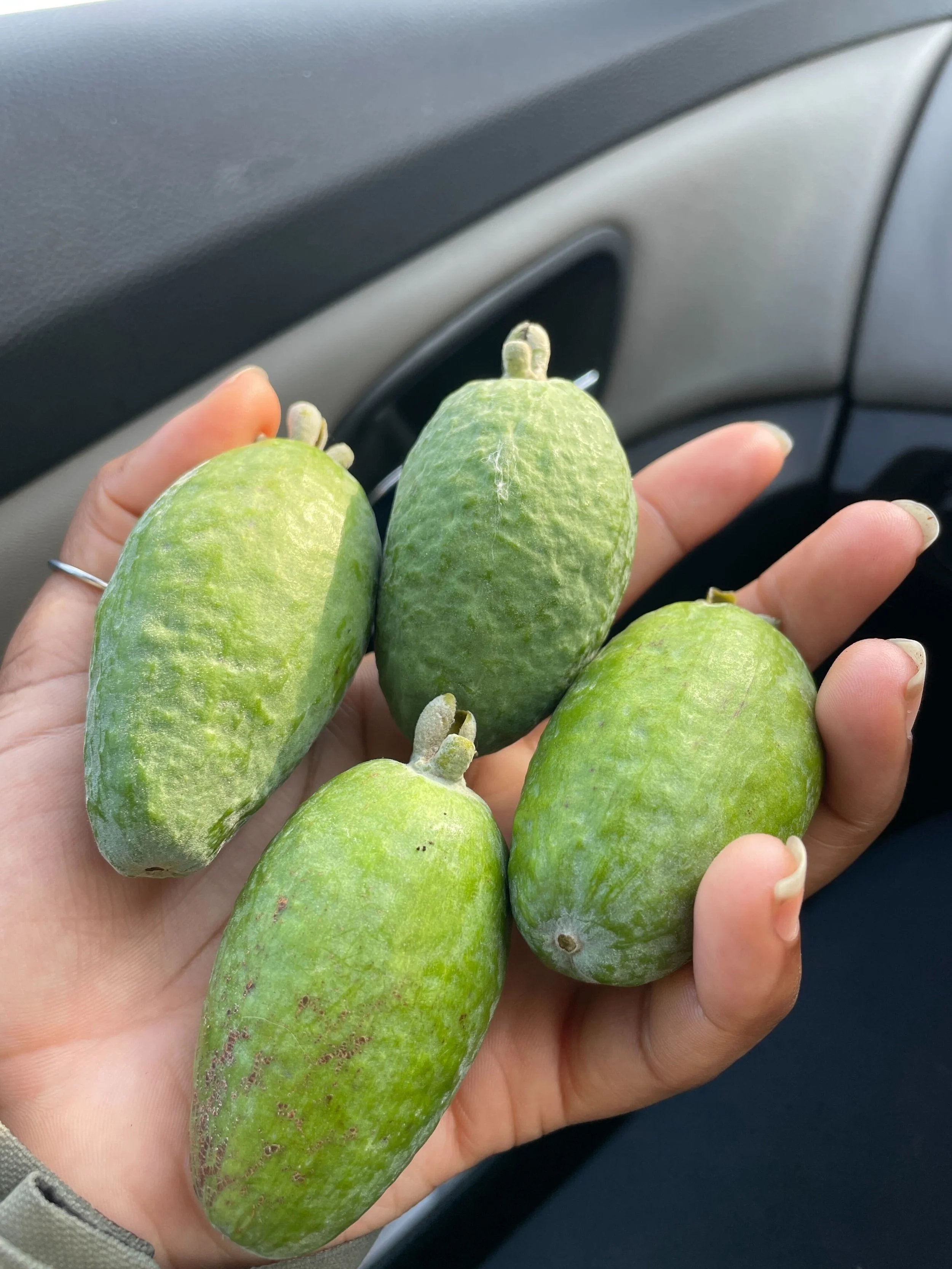Pineapple Guava - Subtropical Fall Fruit
Post sponsored by Welcome to PDX Real Estate Agent, Deb
〰️
Post sponsored by Welcome to PDX Real Estate Agent, Deb 〰️
Pineapple Guava or feijoa
Growing a variety of fruiting plants that produce at different times throughout the year is a great way to extend your harvest. Pineapple Guava (Feijoa) is a great later ripening fruit that, given the right location, can be bountiful here in Portland! These evergreen shrubs (or trees depending on your pruning style) native to South America ripen just about now in November.
The sweet tangy pulp is usually scooped out of the center to eat. Different cultivars have thinner or thicker skin. While all of the skin is edible it isn’t that pleasant to eat. You can tell Feijoa is ripe when the fruits begin to fall off of the shrub. Earlier in the summer they unfurl beautiful showy white, pink blushed flowers with a cluster of hot pink stamens like light sparklers bursting out of the center. The flowers are also edible and said to taste like marshmallows, so magical!
Once established they are drought tolerant however regular watering throughout the summer drought will improve fruit production. These subtropical shrubs are hardy to 15 degrees with some sources even saying as low as 5 degrees. Let’s hope we never have to find out. There are a few self fertile cultivars but you will get more fruit if you plant more than one for cross pollination.
Feijoa gifted to me from a client earlier this week! Their shrub is over 20 years old and maintained at around 6 ft. I shared them with my colleagues in a meeting.
Site Selection & Prep
These shrubs can tolerate some shade but will absolutely produce more in full sun. A south facing direction in front of a wall will help provide the heat and sunlight needed. Ideally, in a place protected from any heavy winds. They prefer moist well draining soil but are very forgiving and will tolerate a range of soil conditions. It’s great to know a plant's hometown to really get an idea of what environmental conditions they have adapted to thrive in.
It’s always good to prep your site a year ahead of planting anything perennial. A soil test will help you get an idea of any adjustments that need to be made or if there are any remediation measures that should be taken. We go to Jen, who runs Blue Raven Farm, for our soil test result interpretations. She prefers RegenAg Labs for her soil testing. It is important to choose a lab and stick with that one, as soil testing methods vary between labs and results can get confusing. Never amend your soil outside of various forms of compost without a soil test. It can really put you in a wonkier position than when you started. A cover crop is a good way to jumpstart the soil food web in that area as soil microbiology needs plant roots to thrive. This cover crop should then be cut in place and allowed to be the mulch for that area. If the area is grass, sheet mulch the year before. You could then cover crop the next year then plant the following year.
So, I’ve said all of this knowing most folks are not going to want to play the long game. This is all just to start building the soil before the plant settles in, giving it a good start.
Planting
Dig your hole twice as wide and deep as the root ball. You’ll fill the hole back in so that the plant sits at soil level. It just helps loosen up the soil for the initial root development. You can lightly amend with compost or an organic fertilizer. A layer of wood chips helps to protect their shallow roots, add organic matter, aid in water retention and support fungal life in the soil. The shrub will produce fruit 2-3 years after planting.
Pruning
Pruning can be done in the winter and minimally necessary to maintain the shape, height and openness of the shrub. You can either completely thin out branches that may be crowding the center or too low to the ground or make releadering cuts to maintain the height and width of the shrub. They are fairly slow growing and there are no major pests or diseases they suffer from here.
Final thoughts
These shrub tree friends not only produce yummy fruit and flowers but provide ornamental interest as well. They are gorgeous throughout the entire year, and the flowers attract many pollinators. You can prepare jam, chutney, include them in fruit leather or simply freeze the pulp to preserve this short shelf-life fruit. I hope this inspired you to grow your own very low maintenance pineapple guava! We are here for all your fruit related needs so please don’t hesitate to reach out. As always, happy harvesting!
Do you have extra and need help?
Talk to your neighbors! It’s a great way to meet them and you can share your abundance hyper locally!
Donate it through Portland Fruit Tree Project’s Fruit Fridge! Harvest and drop off at your convenience and we’ll get it all used up!
Can’t harvest it? Register for us to come harvest for you!
Take the next step with Portland Fruit Tree Project!
This content was generously supported by:
Are you interested in sponsoring Portland Fruit Tree Project content? Send us an email!




